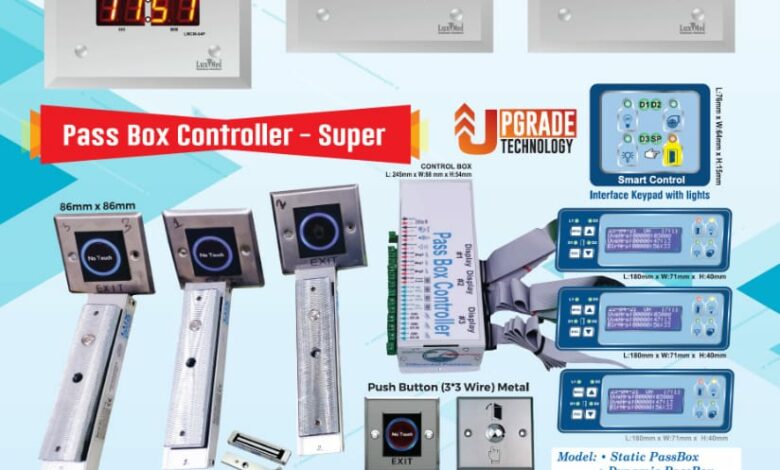What is a Pass Box? How Can It Benefit You?

A pass box is used to transmit materials from one clean room to another clean room at a facility. It is made up of a rectangular box with two doors on either side. The two doors are linked so that they cannot both be opened at the same time, hence preventing pressure losses and cross contamination from occurring.
Microtechnology, biological laboratories, pharmaceutical factories, hospitals, food processing industries, LCD factories, and electronic factories are just a few of the places where it is commonly employed to provide clean air quality. Transferring items between rooms with varying levels of cleanliness is accomplished through the use of a pass box. It can reduce the amount of time spent opening doors, prevent air convection between various rooms, and reduce the amount of pollution produced.
The Lux Lighting Pass Box Controller accomplishes this by guaranteeing that the Door 2 of a Pass Box is closed before the Door 1 of a Pass Box is opened.
There are two LCD Display Cum Operator Panels (LCD Display Panels), one of which will be located above each door and the other which will be mounted over both doors. The panel is equipped with a 20×4 blue backlit LCD, as well as information and status displays for the UV Time Totaliser, Door Status, and other functions. During the configuration of the pass box, the LCD is also utilised.
Also included with the Passbox Controller are connectors for connecting UV lamps, CF lamps, and a fan.
Features
-
It is built on a sophisticated controller-based architecture.
-
One of the most impressive features is the existence of a Door Status Indicator on the LCD panel.
-
It has a company name that was defined by the user. (Settings for pre-dispatch)
-
In addition, the pass box controller drives electromagnetic locks that have an embedded door open sensor that provides door feedback.
-
It has a delay period between the closing of Door 1 and the opening of Door 2 that can be adjusted (and vice versa).
-
The LCD display panel offers four different sorts of status indications: GO, WAIT, DOOR OPEN, and CLOSE DOOR.
-
One distinguishing feature of this controller is the inclusion of a Buzzer output if the door is left open for a period of time greater than the specified time.
-
In addition, the controller contains four special multifunction keys: ESC, UP, Down, and Menu, which are used to operate the CFL, and the ESC key in programme mode.
-
If Manual/Automanual mode is selected, the UV and FAN will operate.
-
If both doors are closed, the UV LAMP will be activated.
-
When any door is opened, the CF LAMP turns on.
-
Calculation of the UV life in hours and minutes. Batteries as a back-up
-
An LED indicates the status of the door on the other side.
Cleaning professionals are well aware of the importance of avoiding cross-contamination between rooms with different cleanroom classes in order to maintain the intended ISO classification and the integrity of products and manufacturing processes. One way to accomplish this is to reduce the amount of stuff that is moved.
It is possible for non-viable particles and bacteria to produce contamination in a cleanroom as a result of the movement of materials in and out of the controlled conditions. Material transfer equipment must be designed and installed correctly in order to achieve this goal, among other things.
When goods must be moved between regions with varying standards of cleanliness, a pass box, also known as a transfer hatch or SAS pass (sterile access system), serves as a barrier between the areas. Specifically, the device is utilised to transport material from one area of lower cleanliness to another area of better cleanliness as well as vice versa.
Mechanical and/or electrical interlock systems are installed in every cleanroom pass boxes to reduce the possibility of cross-contamination. In this way, only one door can be opened at a time, not both or more, reducing the amount of “dirty” air that can enter the cleanroom and allowing it to function properly.




